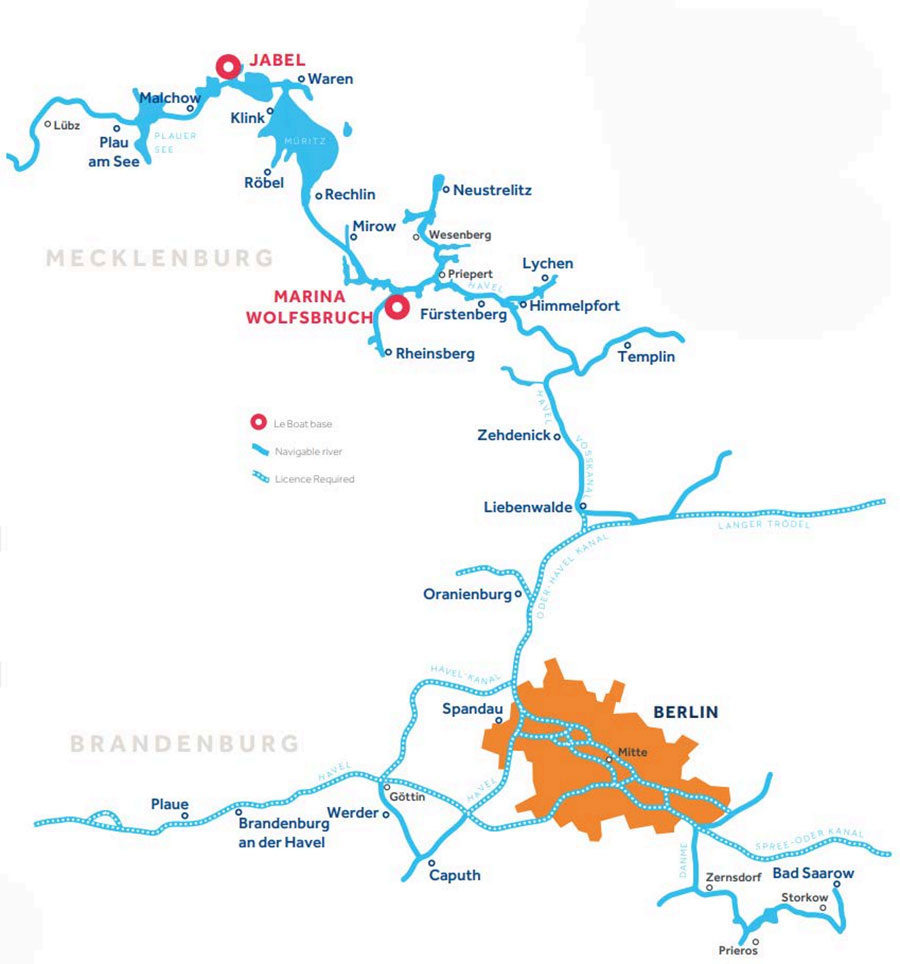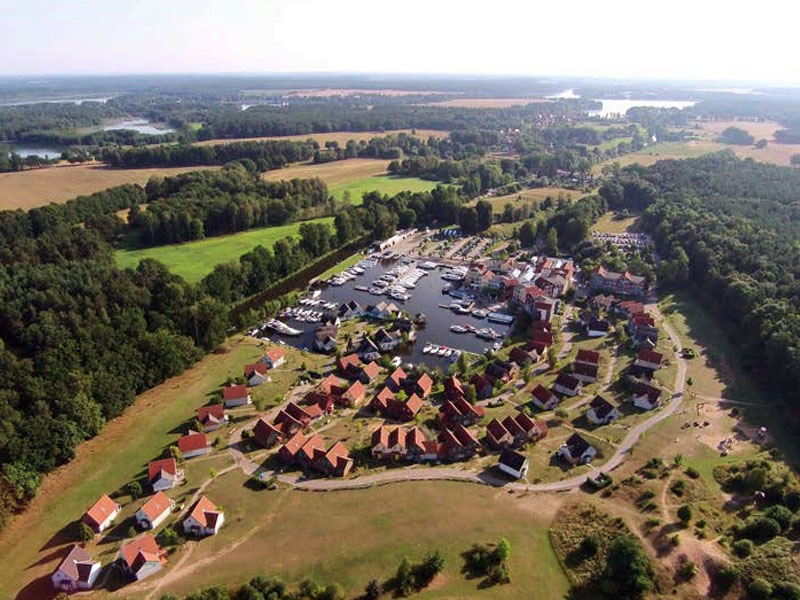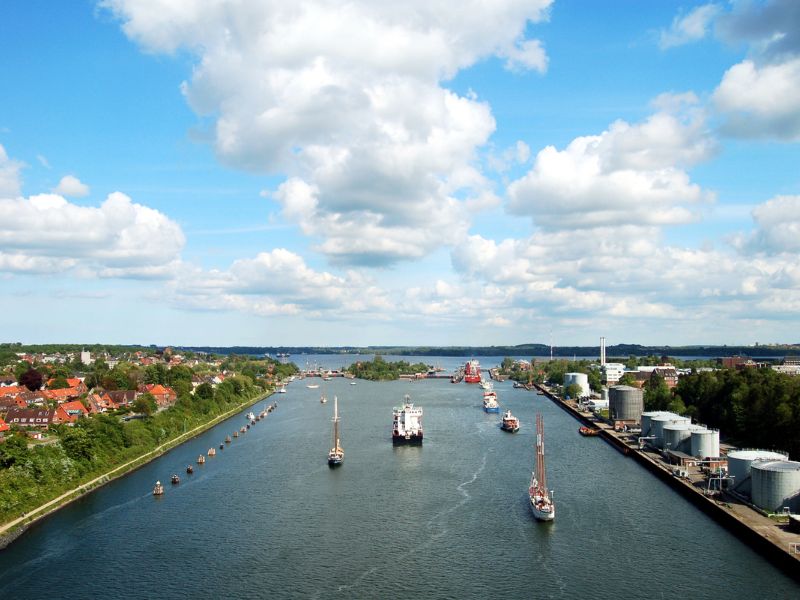Planning a boating trip in Germany? You’re in for a journey that blends serenity, history, and postcard-perfect nature in equal measure. Whether you’re stepping aboard a canal cruiser for the very first time or you already know how to tie a cleat hitch in your sleep, Germany’s vast and varied waterways have something magical to offer. From the glassy lakes of Mecklenburg to the grand palaces of Potsdam, cruising here isn’t just about getting from A to B – it’s about slow travel in its purest form. Picture mooring beneath medieval towers, gliding through tranquil national parks, and sipping local wine as the sun dips behind half-timbered houses. I’ve been lucky enough to drift through this enchanting part of Europe, and trust me – it’s an experience you won’t soon forget.
This guide pulls together everything you need: from the best routes and seasons to top mooring spots, must-try eateries, and hidden gems you won’t find in your average brochure.
Here’s what we’ll cover in the article:
- German boating holiday travel guide: Germany through the eyes of a boater
- Why choose a boating holiday here?
- How canal cruising works
- Top tips for first-time boaters
- Must-see attractions along the way
- Packing list and essentials
German boating holiday travel guide: Germany through the eyes of a boater
Germany’s boating regions
Germany’s boating regions are like a patchwork quilt – stitched together with calm canals, glistening lakes, and winding rivers, each corner telling its own unique story.
Mecklenburg & Brandenburg
Often referred to as the “land of a thousand lakes,” Mecklenburg and Brandenburg form the heart of Germany’s inland waterway system. The Mecklenburg Lake District is the largest connected lake region in Central Europe – and trust me, it’s every bit as dreamy as it sounds. Müritz, the country’s biggest lake, is the star here, surrounded by charming towns like Waren and Röbel that seem untouched by time. Expect tranquil waters, bird-filled skies, and quiet anchorages where nature whispers rather than shouts.
Berlin & Potsdam
Yes, Berlin! You might not expect a major capital to be a prime boating spot, but hop aboard and you’ll discover a different side of the city. Cruise past Prussian palaces, moor in front of cutting-edge architecture, and enjoy Berlin’s cultural buzz from the comfort of your deck. A short sail west leads to Potsdam, where Sanssouci Palace and its manicured gardens make for a fairytale detour.
Havel & Spree River Network
Running like arteries through Eastern Germany, the Havel and Spree Rivers connect dozens of historical towns and natural hideaways. Cities like Brandenburg an der Havel offer medieval charm and rich heritage, while smaller towns like Fürstenberg or Zehdenick give you that off-the-grid, slow-travel feel. This region blends cultural depth with scenic cruising – a perfect combo if you want more than just views.
Uckermärkische Lakes & Northern Forests
Northeast of Berlin, you’ll find secluded corners like Lychen and Templin, surrounded by forests and mirror-like waters. These areas are ideal for nature lovers, with excellent opportunities for fishing, canoeing, or simply letting the silence do the talking. There’s a certain stillness here that’s hard to find elsewhere – a place where even time seems to slow down.
Saxon Canals & Elbe Waterways
If you’re feeling adventurous, head further south toward Saxony and the Elbe River network. This region is less travelled by international tourists, which only adds to its appeal. Think wine-growing hillsides, castle ruins, and authentic German towns where the locals greet you like an old friend.
Whether you’re after spa towns, sandy shores, wild forests, or urban adventure, Germany’s boating regions offer more than just a route – they offer stories, encounters, and moments you’ll remember long after you’ve tied up the boat.

Why choose a boating holiday here?
Because Germany’s waterways aren’t just routes — they’re experiences. A boating holiday here is about slowing down, reconnecting with nature, and drifting past scenes that feel lifted from a storybook. You’ll pass through medieval towns where every building seems to have a tale, and find hidden moorings surrounded by forests so quiet, you’ll hear your own heartbeat. Whether you’re paddling through a nature reserve in Brandenburg or docking beneath the spires of a palace in Potsdam, there’s something deeply peaceful and grounding about boating in Germany. You don’t need a licence for many routes, the waters are calm, and the infrastructure is excellent — think lock keepers who wave as you pass and marinas with fresh bread just a stroll away. And then there’s the food. Dock your boat, walk five minutes, and you’re likely to find a lakeside taverna grilling fish caught that morning. Pair that with local Riesling or a cold Pils, and you’ll understand why so many travellers fall in love with this kind of holiday.
How canal cruising works
If you’ve never done it before, don’t worry — canal cruising is surprisingly simple, and incredibly rewarding. You’ll receive a full briefing at your base, and most boats don’t require a licence. It’s slow travel by design — cruising speeds top out around 9 km/h on canals, and about 12 km/h on lakes. That’s not fast, but that’s the point. Locks? Yes, you’ll meet a few — some automatic, others manual — but don’t let that intimidate you. They’re well signposted, and often there’s a lock keeper around to lend a hand (or at least a smile). Most of the time, passing through a lock becomes part of the charm — like a gentle nudge reminding you to slow down and take in the moment. Water tanks usually need filling every couple of days, and you’ll want to plan for waste tank pump-outs too — both are well-marked on onboard maps. Mooring is easy and affordable and many spots are equipped with electricity, water, and even fresh pastries in the morning if you’re lucky.
What is the best month to boating in Germany?
Germany’s boating season usually stretches from April to October, with May to September being the sweet spot for weather, daylight, and activity. In spring, wildflowers carpet the riverbanks and the towns are quiet, ideal for travellers who prefer a peaceful pace. Come summer, the lakes warm up, making swimming stops irresistible, and towns like Waren and Rechlin come alive with markets, music, and festivals.
Personally, I love September. The crowds thin, the air is crisp, and the water is still warm enough for a dip. Plus, harvest season brings fresh produce, wine tastings, and that golden-hour light that makes every photo look like a postcard. Avoid late October unless you love solitude and chilly mornings — though, with the right jacket and some hot Glühwein, even that has its charm.
What boat should I choose?
The right boat depends on who you’re bringing and how you like to travel. For couples, a compact cruiser like the Caprice or Cirrus B gives you comfort without feeling bulky. Families or groups? Look at something roomier like the Horizon or Magnifique, with multiple cabins and top decks perfect for evening BBQs and sunset wine sessions. If you’re after a more luxurious experience, go for a boat with a sun deck, bow thruster, and dual steering. You’ll appreciate it during trickier manoeuvres and while navigating locks. And here’s a tip from personal experience: don’t underestimate the joy of an upper deck fridge. Cold drinks within arm’s reach while cruising? Priceless. Canal boat rental in Germany

Suggested itineraries for 5 Days
Option 1: Müritz Loop – For Nature Lovers
Start your journey from Marina Wolfsbruch, heading south toward the majestic Müritz National Park. Day 1 brings you to Rechlin, where you’ll find wildlife trails and peaceful forests. On Day 2, cruise to Waren, the region’s hub, with its charming old town and the fascinating Müritzeum – part museum, part aquarium. Day 3 takes you to Röbel, a postcard-perfect lakeside town where a swim and a gelato are a must. Day 4, set your sights on Mirow, known for its romantic Castle Island and paddle-worthy canals. Then wrap it up by cruising back north on Day 5 through Jabel, stopping for lunch by the bison reserve before returning to base.
Option 2: Culture & Castles – For History Buffs
Begin in Potsdam, rich with Prussian grandeur, then head to Caputh (Einstein’s summer home!) on Day 1. Day 2, cruise to Brandenburg an der Havel, soaking up medieval architecture and riverside cafés. Spend Day 3 exploring Rathenow’s Optikpark, before reaching Havelberg on Day 4 – a hidden gem at the meeting of Elbe and Havel Rivers. Return to Potsdam on Day 5 with a heart (and phone gallery) full of memories.
Suggested itineraries for 7 Days
Option 1: Grand Lake Escape – The Classic Müritz Tour
- Day: Depart from Wolfsbruch and make your way to Rheinsberg. The Rococo castle is a dream, and the gardens are ideal for a lazy afternoon picnic.
- Day: Head to Mirow, where a stroll around Love Island and the baroque castle grounds sets the tone.
- Day: Cruise into Rechlin, gateway to Müritz National Park.
- Day: Continue to Waren, where you’ll find shops, restaurants, and lakefront vibes with Mediterranean flair.
- Day: Anchor in Klink, enjoy a spa visit or a swim at the sandy beach.
- Day: Spend the day in Jabel – calm, green, and gloriously slow.
- Day: Return to Wolfsbruch, maybe stopping at Zehdenick for a final scenic lunch.
Option 2: Berlin to Nature – Urban to Wild
- Day: Start in Berlin-Spandau (yes, you can cruise right past the citadel!), then spend
- Day: in Oranienburg, visiting the Schloss and memorials.
- Day: Arrive at Liebenwalde, a peaceful green haven.
- Day: Continue to Fürstenberg, enjoying a swim or a kayak.
- Day: Explore Lychen with its timber rafting heritage.
- Day: Head south through Templin, unwind in the thermal spa.
- Day: Finish in Zehdenick, capping off the week with goat cheese from Capriolenhof and local wines.
Top tips for first-time boaters
First things first — relax. This isn’t a race, it’s a float. Boating in Germany is beginner-friendly, but a few handy tips will make your journey smoother than the glassy waters of the Havel at sunrise.
Lock navigation: Most locks are automatic or operated by friendly lock keepers. Watch for green lights. Always hold your ropes firmly, and never let your boat bump around freely in a lock — it’s like trying to dance on a moving floor.
Mooring: Marinas are plentiful and well-equipped, but in peak summer, it helps to arrive early (especially in popular places like Waren or Potsdam). You’ll usually pay €1.50–€3 per night, often with showers, power, and fresh bread deliveries.
Provisioning: Stock up before departure, but don’t overdo it. Most towns have regular markets (Waren: Tue, Thu, Fri, Sat – trust me, go hungry). Bring reusable bags and some small cash for local vendors.
Safety: Life jackets are onboard, but make sure kids and pets wear theirs when on deck. Keep a boating pole handy for docking and always keep one hand on the boat when boarding — no one wants to start the trip with a splash.
Locks and distances
Most of your time will be spent gliding peacefully — but when you reach a lock, it’s a little moment of action. Electric locks (like those at Wolfsbruch or Fürstenberg) are simple to use: green light means go. Manual ones? Set a crew member ashore ahead of time and have them work the gates while you keep the boat steady.
As a rough guide, distances are calculated at around 7.5 km/h, with 12 minutes per lock. But honestly, plan loosely. A charming bakery or riverside vineyard might tempt you into anchoring for longer. It’s all part of the journey.


Must-see attractions along the way
Germany’s waterways don’t just connect towns — they connect time periods, cultures, and unexpected moments of wonder. Whether you’re in a quiet nature reserve or anchored beside a palace once walked by kings, you’ll constantly find yourself saying, “Let’s just stay a little longer…”
Here are a few unmissable highlights:
Sanssouci Palace, Potsdam – Frederick the Great’s answer to Versailles. Its Rococo elegance, sweeping gardens, and orangery feel like something from a dream.
Müritz National Park – A paradise for birdwatchers and anyone needing a digital detox. Paddle quietly and you might spot an osprey or a red deer.
Rheinsberg Castle – A lakeside gem surrounded by forests, once the peaceful retreat of Prussia’s royals. Still feels royal, to be honest.
Spandau Citadel, Berlin – One of Europe’s best-preserved Renaissance fortresses. Walk the ramparts, take in a concert, and grab a beer in the old town.
Rechlin – Your gateway to Müritz National Park and a birdwatching haven. Don’t miss the harbour bistro at sunset — it’s magic.
Himmelpfort – Moor, wander to the monastery ruins, and enjoy coffee beside Lake Stolp. Yes, they really do collect your mooring fee in a piggy bank.
Mirow Castle Island – History, romance, and a scenic stroll wrapped into one. Bonus: there’s a tiny “Love Island” next door.
The beauty of boating is that you’re never far from something unexpected — so leave space in your itinerary for detours and whimsy.
Boat & bike: A perfect combo
Here’s a secret most first-timers don’t realize: cycling and boating go together like bratwurst and mustard. Many of the towns along Germany’s waterways are nestled beside dedicated bike paths, meaning you can moor your boat and hop straight onto a bike.
Why bike? Simple: it’s the best way to explore inland villages, nature parks, and forest paths that your boat can’t reach. Plus, it’s a great way to stretch your legs after a lazy afternoon of sunbathing on the deck.
Many boats offer bike rentals, and in some regions, you’ll even find e-bikes for a bit of extra zip.
Adding cycling to your itinerary
If you’re building a boat & bike itinerary, here are a few perfect pairings:
Mirow → Castle Island & Love Island: Park the boat, cycle through the castle grounds and beyond. It’s flat, scenic, and full of picnic spots.
Templin → Uckermärkische Seen Nature Park: This region is a cyclist’s dream. Quiet paths, wild swimming spots, and nature everywhere.
Lychen → Timber Rafting Museum: Pedal to this quirky museum, learn a bit about the town’s rafting heritage, then enjoy a lakeside lunch.
Rheinsberg → Flecken Zechlin: An easy, family-friendly route through the forest. Stop for ice cream and a swim en route.
And don’t worry if you’re not a Tour de France type — the paths are flat, well-signposted, and often run alongside the canals, so getting lost is nearly impossible.

Packing list and essentials
Packing for a boating trip is a bit like preparing for a road trip… but on water. You’ll want comfort, layers, and just a dash of waterproof gear — because even in July, a sudden drizzle might roll in.
Here’s what you shouldn’t forget:
Essentials:
- Soft, non-slip shoes (you’ll be hopping on and off deck)
- Reusable water bottle – for refills at marinas and towns
- Torch/headlamp – nights on the water can be very dark
- Portable power bank – not all moorings offer electricity
- Sunscreen, sunglasses & hat – the reflection off the water is no joke
Clothing:
- Layers! Bring light sweaters, a windbreaker, and comfortable casual clothes
- Rain jacket – just in case (it’s Germany, after all)
- Swimsuit & towel – those lakes are too tempting not to jump in
Extras:
- A small daypack for shore excursions
- Local guidebook or offline maps
- Binoculars – for spotting wildlife or admiring far-off castles
- A good book (or three). You’ll have plenty of peaceful moments to read
And finally, pack your sense of adventure. That, and a corkscrew — because chances are, you’ll find yourself sipping wine on deck as the sun sets over a calm German lake.
